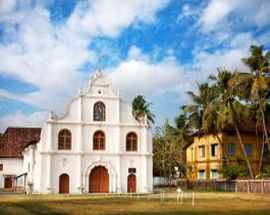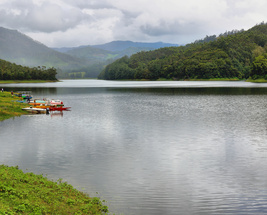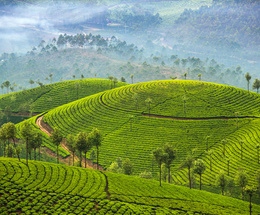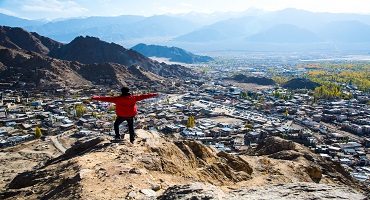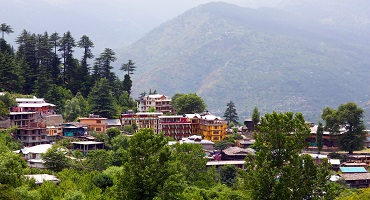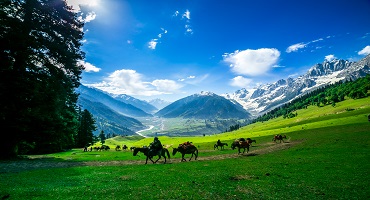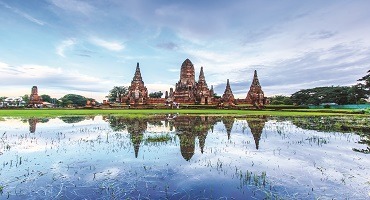Irresistible India
A country so vast and vibrant that a three-week vacation seems like a short holiday. India welcomes you with its beaches, heritage monuments, palaces, tropical wildlife, Himalayan adventures, indulgent cuisines, luxury resorts, backpacker’s dream destinations and much more. Let’s dive right into the wealth of information that will help you make every day of your trip count.
|
India Tourism: Overview
|
|
Continent
|
Asia
|
|
Capital
|
New Delhi
|
|
Official Language
|
English
|
|
Dial Code
|
00-91+ area code
|
|
Population
|
1.353 Billion (2018 estimate)
|
|
Currency
|
Indian Rupee
|
|
Time Zone
|
India Standard Time IST (GMT+ 5:30)
|
|
Area
|
3.3 million sq. km
|
India Beaches
A sweeping coastline of 7516.6 km along India’s mainland and islands offers you an array of beaches to visit. Head towards Calangute, Baga, Anjuna and Palolem in Goa if you are in a mood to party. Andaman and Nicobar islands have world-class activities at Havelock and North Bay for those who seek the adrenalin rush. Scuba diving, seabed walking and water sports programs are available for individuals and families. If all you want to do is relax and rejuvenate then Kerala’s Varkala, Kovalam and Cherai are your best bet. You are in the land of Ayurveda, aromatherapy and natural abundance. Enjoy! Just a hop, skip and jump away from Kerala is your next destination - Bangaram island in Lakshadweep. Imagine being on an island that has a resident population of just 10 people!
India Wildlife
See them from a boat cruise or a jeep safari; they look you in the eye with a promise of unforgettable thrill. Wildlife in India is brimming with success stories of conservation and responsible ecotourism. India has a forest cover of 7,08,273 sq. km with 18 Biosphere Reserves, 104 National Parks and 551 Wildlife Sanctuaries. Kaziranga in Assam is a Natural World Heritage Site famous for its one-horned rhino population. Gir Wildlife Sanctuary is the only place in India that houses the Asiatic Lion. Thanks to varied elevations, Namdapha National Park in Arunachal Pradesh is a unique zone with four pantherine species - leopard, tiger, snow leopard and clouded leopard.
You can plan your visit to any of the conservation sites and protected areas depending on your interest. Some of the important ones on the map are:
- Tiger Reserves: Kanha, Pench, Corbett, Bandipur, Dandeli, Ranthambore
- Elephant Reserves: Periyar, Dubare, Mudumalai
- Wetlands: Keoladeo Ghana, Chilka Lake, Vembanad, Loktak
- Marine: Islands of Andaman & Nicobar, Bhitarkanika, Narara
- Bird Sanctuaries: Khijadiya, Kumarakom, Nalsarovar, Bharatpur, Sultanpur
India Cuisine
The Indian style of cooking and its gastronomic delights are best relished, locally. They vary from state to state. The next best thing to do is find a restaurant that serves regional delicacies you wish to savour. Rice, roti (flatbreads made of whole wheat/buckwheat/sorghum/millet/corn), spiced curries (with meat or vegetables) and fried entrées are the basics on the table. Hop on board and discover the must-have signature dishes.
South India:
Fermented batter, homegrown spices and coconut line the gourmet trail of this region. Idli, dosa, fresh chutneys, sambar, medu vada, appam, stew, avial, Hyderabadi Biryani, Coorg Pandi Curry (pork), Chettinad Chicken, Malabar parotta, coastal fish preparations and payasam (dessert) are just some delights to discover.
North India:
The traditional platters include a generous mix of marinated barbecues, dairy products, thick gravy dishes, fresh vegetables and Central Asian culinary influences. Roghan Josh lamb stew, the world famous Butter Chicken, Amritsari Chhole bhature, Tandoori roti (made in clay ovens), Rajma-Chawal, Makke ki roti & sarason ka saag, Kebabs, Litti-Chokha, Dal-Bati-Churma, Lal Maas, Gajar ka halwa and Ras Malai (desserts) are some of the notable ones.
West India:
Seafood, snacks and nourishing drinks take up a large portion of this pie chart. Do try the signature Parsi dishes like dhansak, patra ni macchhi and salli boti when in Mumbai. Other wonder plates include spicy Kolhapuri Mutton, Pork Vindaloo, Vada Paav, Paav-Bhaji, Bhelpuri, Panipuri, Prawn Curry in coconut gravy, butter garlic crab, Puranpoli (sweet flatbread) and Gujarati Thali meals.
East India:
Abundance of rice, fertile rivers and the palates of indigenous north-eastern tribes give the cuisine of eastern states of India a unique significance. Tibetan, Chinese, Thai and Mongolian influences add a layer of enigma to your food explorations here. From the soul satisfying Thukpa to smoked pork with bamboo shoots and fish curries, you have a lot to choose from. The vegetarian fair is as lavish with its variety of dals, bhajas and desserts such as Rasgulla and Chhena Poda.
India Tourist Spots
A little bit of planning goes a long way when you are chalking out your India itinerary. You will always be overwhelmed with a feeling of ‘so much to see, so little time’. A good way to counter that is to make a region-wise list. It will help you maximise the experience by minimising spends and travel time.
Some of the integrated destination circuits are:
Delhi-Jaipur-Agra:
This Golden Triangle is one of the most visited trails in India. Perfect for those who have just a few days to spare. Some of its highlights are the Red Fort, India Gate, Qutub Minar, Akshardham, Taj Mahal, Agra Fort, Fatehpur Sikri, Jantar Mantar, Amer/Jaigarh/Nahargarh Forts, Hawa Mahal, Jal Mahal and Jaipur City palace. Add Khajuraho to this circuit and you can see the UNESCO World heritage site of temples with erotic sculptures.
Bhubaneswar-Puri-Konark:
It is called the Golden Triangle of the east. This covers the famous Konark Sun temple, Jagannath temple, beaches of Puri and the hub of Odia culture, Bhubaneswar.
Jodhpur-Bikaner-Jaisalmer:
A breath-taking circuit of forts, palaces and The Great Indian Desert. Visit Mehrangarh, Umaid Bhawan, Junagarh, Lalgarh and the Jaisalmer fort to sift through pages of history.
Kerala:
Tranquil backwaters of Allepy, Kumarakom and Kochi offer a great backdrop for a relaxing holiday. Pamper yourself with rejuvenating ayurvedic treatments by the beaches of Varkala, Kovalam, Cherai and Bekal. Eco enthusiasts will have a field day at Periyaar Tiger Reserve, Waynad Wildlife Sanctuary, Eravikulam National Park and many others.
Chennai-Kanchipuram-Mahabalipuram:
Welcome to the Golden Triangle of the South. The ancient city of Chennai is your gateway to the UNESCO Heritage site of Mahabalipuram – home to 7CE rock relief monuments and over 40 temples and Kanchipuram – known for Kanchi Matha headquarters and the famous Kanchipuram Sarees.
Assam-Arunachal Pradesh-Manipur-Meghalaya-Mizoram-Nagaland-Sikkim-Tripura:
Known as the ‘paradise unexplored’, India’s north-eastern region is rich in natural beauty. Kaziranga Wildlife Sanctuary, Majuli riverine island, Namdapha National Park, Tawang, Loktak Lake, INA Museum, Mawsmai Caves, Cherrapunjee, Tam Lake, Kohima War Memorial, Gangtok and Neermahal are some of its major attractions.
India Popular themed circuits:
- Lumbini-Bodhgaya-Sarnath-Kushinagar Buddhist circuit
- Badrinath-Kedarnath-Gangotri-Yamunotri Himalayan pilgrimage circuit
- Delhi-Jaipur-Ranthambore-Fatehpur Sikri-Agra-Orchha-Khajuraho-Varanasi Luxury Train Circuit by Indian railways
Interesting Facts about India
- Water was first discovered on the moon with the help of India’s Chandrayaan 1 moon mission in 2009.
- The game of snakes and ladders originated in India.
- India has a village, Shani Singapur, where most of the houses don’t have a door.
- Kumbh Mela of 2013 at Allahabad saw the largest congregation of pilgrims in the world.
- It has the highest cricket ground in the world at an elevation of 2,144 mtr in Chail.
Location of India: Transit Territory
India is located in the Indian Subcontinent, north of the equator, in South Asia. Its prominent peninsular features are surrounded by the Indian Ocean, Arabian Sea, Lakshadweep Sea and the Bay of Bengal. The Himalayan mountain range is to its north and northeast. India is a significant transit point that connects the European and Central Asian countries with East Asia and Australia via sea route.
Best time to Visit India
November - February:
This season bookends the best time to visit India with the beginning of winter and arrival of spring. The beaches come alive with tourists at this time. Sightseeing is pleasant as the soaring temperatures and humidity take a backseat. It is also the time to rejoice and party as most of the festive celebrations such as Diwali, Christmas, New Year and many others line up during these months.
March - May:
Summertime in India is known to be harsh with temperatures rising above 45°C. With this disagreeable weather arrives the golden opportunity for wildlife enthusiasts and adventure sports lovers. Megafauna and rare animal sightings around the water bodies are a given at most of the National Parks. The alpine Himalayan areas warm up and are no longer excruciatingly cold.
June – September:
The western coast gets its first monsoon showers before the eastern coast. This is the time to see India in a glory that most of the tourists miss out upon. Rolling hills are covered in a canopy of mist and green lushness.
How to get to India
By Air: Delhi, Kolkata, Mumbai, Chennay, Bengaluru, Hyderabad are well connected with the rest of the world by flights.
By Rail: Once you are in India, you can book your tickets with Indian railways via their online portal to reach a desired city or a town.
By Road: State Transport Buses, Taxicabs, Car Rentals and privately-run Volvo buses ply between all major cities, towns and villages. If you are visiting from a neighbouring country, you can simply drive down as long as you have all the necessary documents in possession.
History of India: From Indus to Independence
Indus Valley Civilisation, 2,500 BC, marks the beginning of India’s documented history. It was followed by key historic periods such as the Vedic Civilisation, onset of the Buddhist age around early 7th Century BC and Alexander’s invasion in 326 BC. What followed is divided into ancient (Gupta/ Harshavardhana/ Chalukyas/ Pallavas), medieval (from the Palas to the Mughals) and the history of the freedom struggle since 1857.




.jpg)

